11 Tips for Identifying Authentic Antique Glassware
Identifying authentic antique glassware can be a rewarding experience for collectors and enthusiasts alike. By paying attention to key details such as the craftsmanship, design, and wear patterns, you can distinguish genuine vintage pieces from modern reproductions. Whether it’s examining the presence of bubbles, the texture of the edges, or the color of the glass, these subtle features tell a story about the piece’s history. With the right knowledge, you can confidently spot true antique glassware that adds unique value to any collection.
This post may contain affiliate links, which helps keep this content free. Please read our disclosure for more info.
Examine the Glass for Bubbles
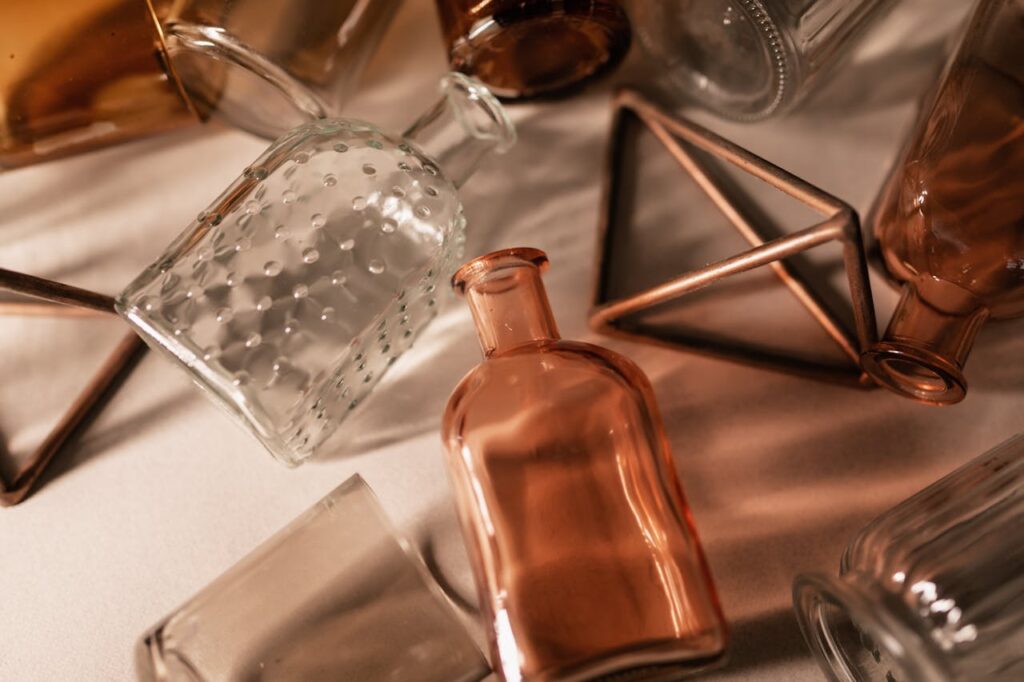
One of the most noticeable characteristics of authentic antique glassware is the presence of bubbles within the glass. These bubbles form naturally during the manufacturing process when air gets trapped as the glass is melted and shaped by hand. This feature is a telltale sign that the piece was created using older methods, as glassmakers from the 19th and early 20th centuries didn’t have the advanced equipment to produce perfectly smooth glass. In contrast, modern glassmaking techniques generally eliminate these imperfections to ensure a flawless finish. The more bubbles that appear in the glass, the more likely it is that the piece is an authentic antique, as hand-blown glass often retains these air pockets as part of its character.
In addition to bubbles, look for other signs that indicate the piece was crafted by hand. Glassmakers who manually blow and shape the glass often leave behind small imperfections in the form of uneven walls or slight distortion. These characteristics, including bubbles, give the glassware a unique charm and historical authenticity that is hard to replicate.
Look for Unevenness in Shape
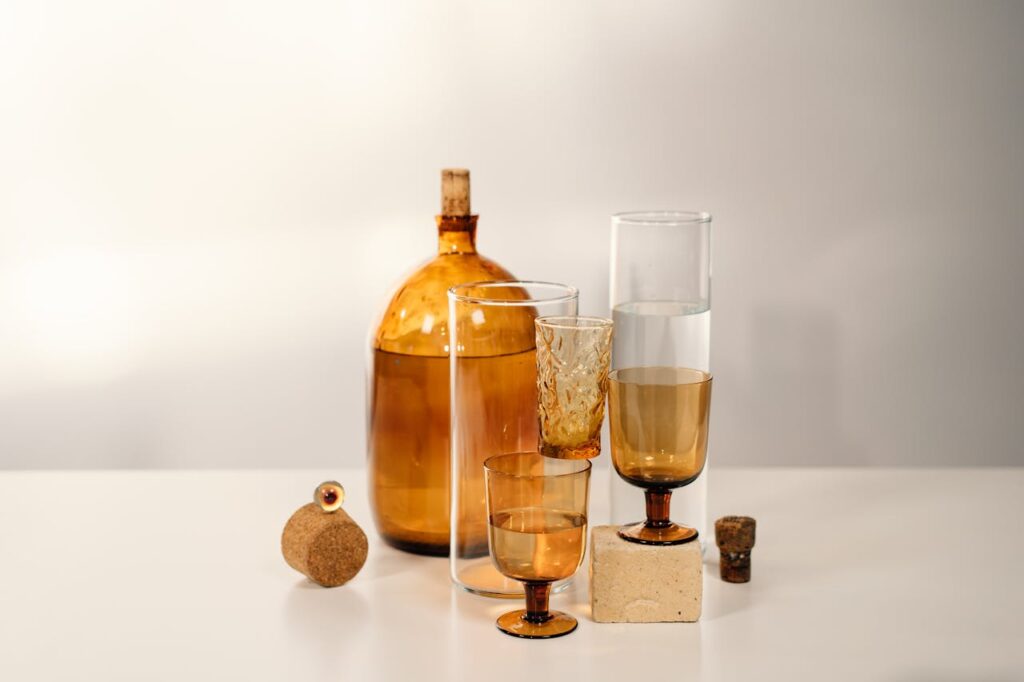
Authentic antique glassware often displays slight unevenness in its overall shape, a result of handcrafting rather than mass production. Older pieces, particularly those made by glassblowers before the rise of industrial machinery, often have subtle differences in thickness and dimensions. For instance, a glass may have slightly thicker walls at one point and thinner walls at another, as a result of the artisan’s handwork. These irregularities are hard to reproduce in modern manufacturing, where machines are designed to make glassware uniform in appearance.
The unevenness is part of the story behind the piece, reflecting the craftsmanship and time it took to shape the glass. For collectors, these imperfections are not flaws, but rather a hallmark of authenticity, distinguishing handmade antiques from their perfectly symmetrical, factory-made counterparts. Examining the shape closely can reveal the true age and origin of the piece.
Inspect the Glass Edges for Hand-Cutting
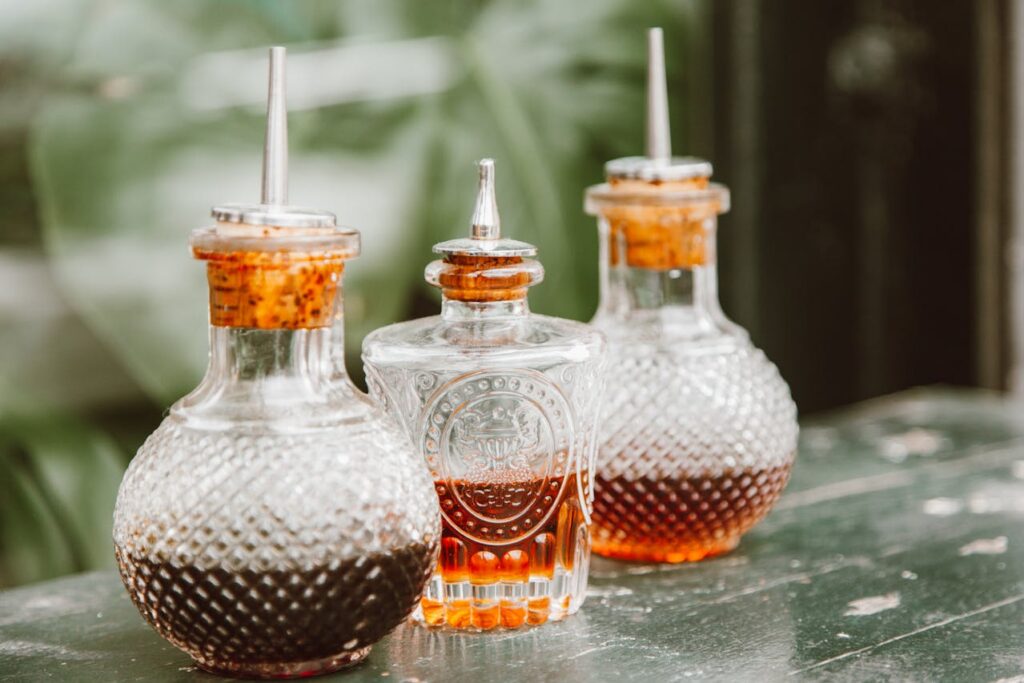
One of the most distinctive features of antique glassware is the hand-cut edges, which can be felt and seen when inspecting the piece. Unlike modern glassware, where edges are often machine-polished for uniformity, antique glass pieces have hand-cut rims or bases that show slight variations. These hand-cut edges may feel a little rough to the touch, as they were shaped with tools like glass cutters or grinding wheels. Over time, some edges may have softened slightly, but the irregularities remain.
The presence of hand-cut edges is a key indicator of a piece’s authenticity, as this technique was commonly used in the production of fine glassware from the 18th and 19th centuries. If you come across a piece with sharp, smooth edges, it is likely to be a modern reproduction. However, authentic antique glass with hand-cut details will give you a more tactile, textured feel, showcasing the artisan’s skill in shaping the glass.
Check for a Warm, Muted Glow
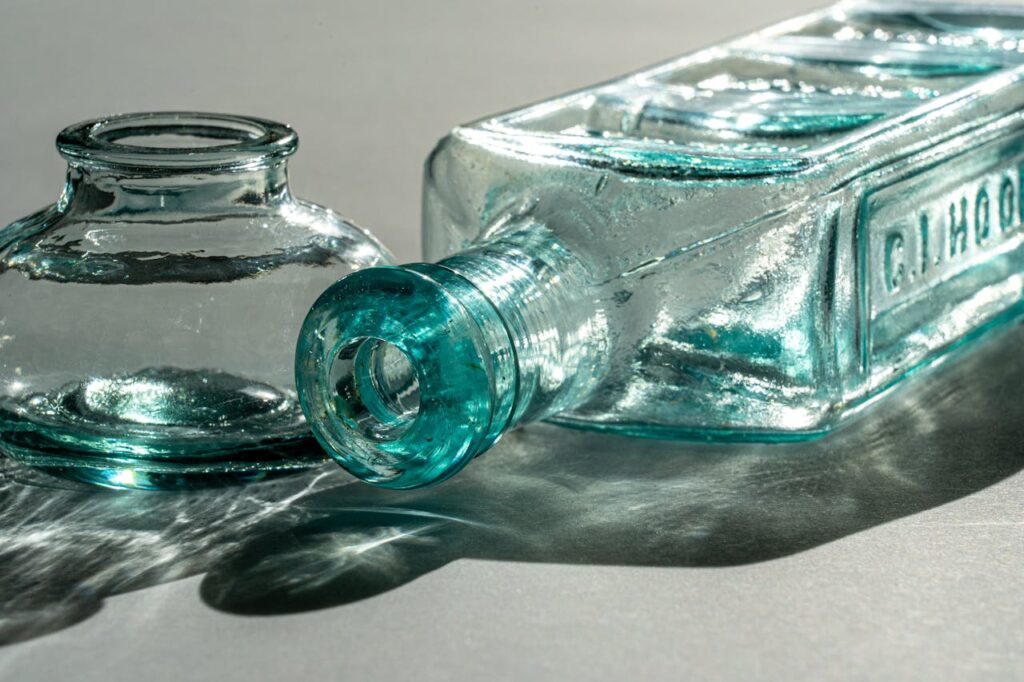
Authentic antique glassware often has a unique, warm glow that is hard to replicate in modern glass. This subtle glow is a result of the materials used in the glassmaking process. In the past, the raw materials for glass production, such as sand and minerals, were less refined than they are today, which led to slight variations in the finish and color. This creates a soft, almost muted sheen that is not as bright or glossy as modern glassware. Over time, the glass may also acquire a natural patina, adding depth and character to its appearance.
This warm glow is typically absent in modern, mass-produced glassware, which tends to have a more sterile, uniformly bright finish. The glow in antique pieces is one of the reasons why they are so valued by collectors, as it can only be found in glass created by older techniques. When examining a piece, hold it up to the light to see if it radiates this distinctive warmth, a key sign of age and authenticity.
Study the Glass Color
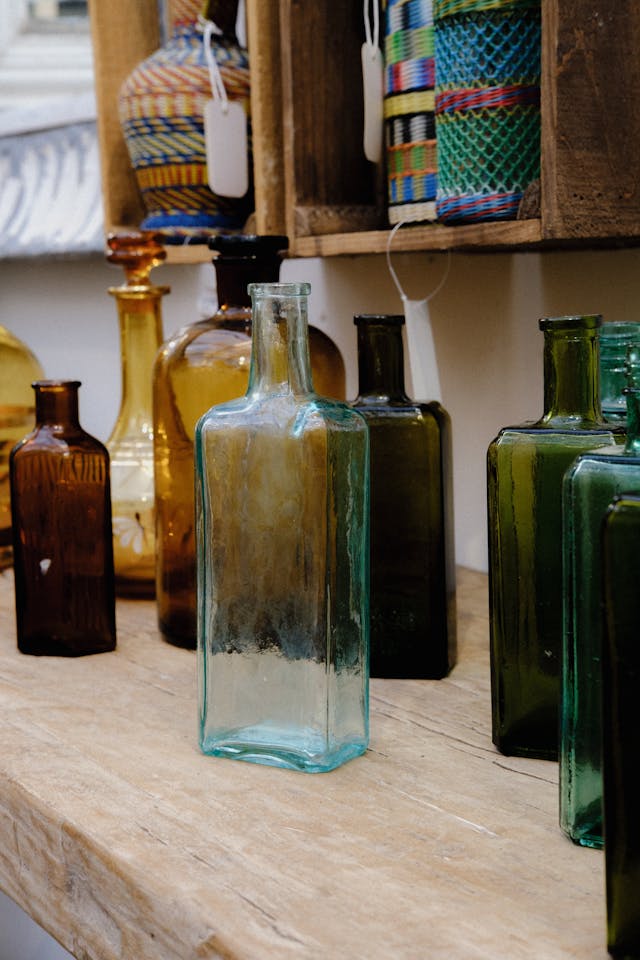
The color of antique glassware is often deeper and more complex than that of modern glass pieces. Older glassware was made using less refined ingredients, which resulted in a wide range of hues, many of which can appear subtle and varied depending on the light. You may notice colors in antique pieces that shift or change as you move the glass around, with some parts of the piece appearing slightly darker or lighter. This color variation is difficult to reproduce today and is often one of the first things collectors notice when distinguishing authentic antique glass.
Furthermore, some antique glassware, especially pieces from certain periods, may have developed a natural patina due to exposure to air and light over time. This patina adds depth to the color and can give the glass a soft, aged look. If you find a glass piece with an unusual color or one that seems to change in different lighting conditions, it is likely an authentic antique with a story to tell.
Inspect the Bottom of the Piece

The bottom of an antique glass piece can provide a wealth of information about its authenticity. One of the most distinguishing features of older glassware is the pontil mark, an imperfection left by the rod used to hold the glass while it was being shaped. Pontil marks often appear as rough spots or small indentations in the glass and are a clear indication that the piece was handmade. This mark is much harder to achieve with modern glassmaking techniques, where the glass is usually produced using molds and machines that leave no trace of human intervention.
In addition to pontil marks, older glassware may have other signs of handcrafting on the bottom, such as irregularities or a slightly rough texture. These characteristics are valuable to collectors, as they confirm the piece’s age and hand-made origins. If you come across a piece with a perfectly smooth base, it is more likely a modern reproduction.
Check for Air and Water Marks
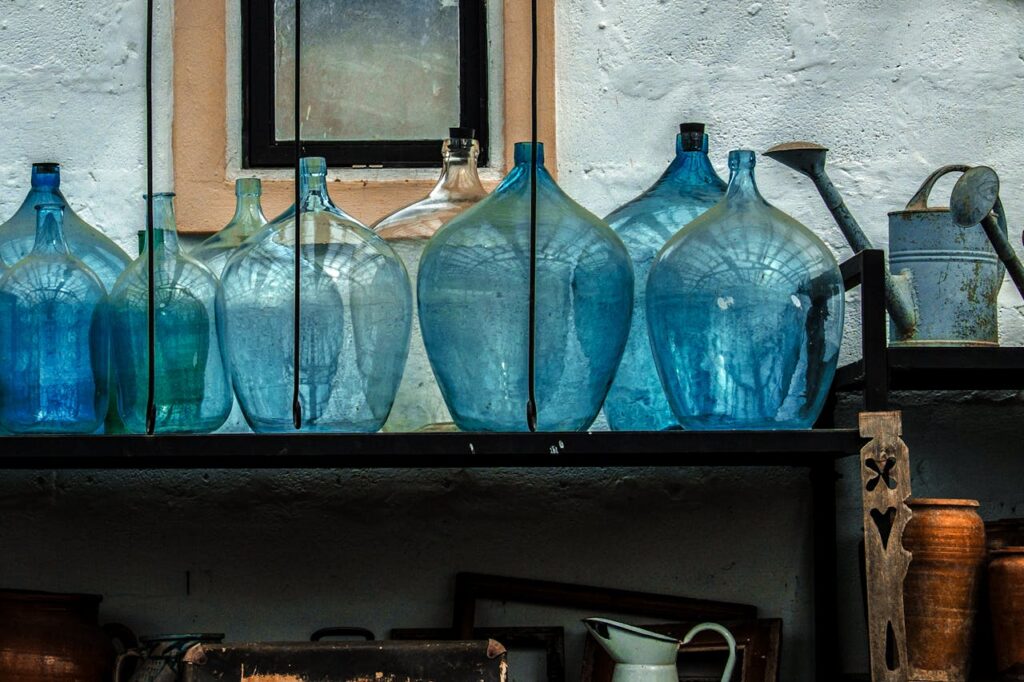
Air and water marks are subtle signs that can indicate the authenticity of antique glassware. Air marks, also known as air bubbles, are small pockets of trapped air that form inside the glass as it is shaped. These marks are natural in older pieces made by hand and are especially common in glassware produced during the 18th and 19th centuries. Water marks, on the other hand, often appear on the surface of the glass when it has been exposed to moisture over time, resulting in slight discolorations or cloudy patches.
These marks can be difficult to detect at first glance, but are key indicators of an antique piece. Air marks, in particular, are rarely seen in modern glassware, as industrial methods have eliminated the chance for air bubbles to form during production. When inspecting a piece, look closely at the surface and the internal structure for these subtle signs of age and authenticity.
Look for the Signature or Maker’s Mark
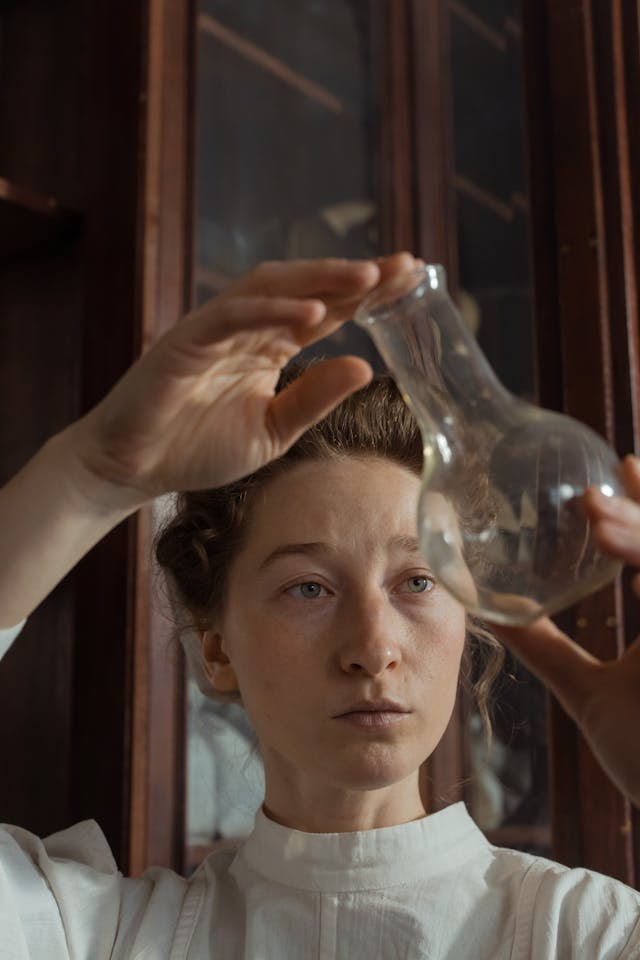
Many antique glassware pieces will have a signature or maker’s mark etched or engraved onto them. These marks can vary in form, ranging from a simple symbol to the name of the glassblower or company. Identifying these marks can be a helpful way to confirm the authenticity of a piece. Makers’ marks were often applied to higher-quality glassware to indicate the producer’s identity and guarantee the quality of the craftsmanship.
Not all antique glassware will have a visible mark, especially if it was made by a small or unknown artisan, but when a mark is present, it can provide invaluable insight into the piece’s history. Researching the signature can lead you to information about the period, style, and geographical location of production, which can further help authenticate the item. If the glassware lacks any marks, you can still look for other clues, such as the style, materials, and manufacturing techniques used to help determine its authenticity.
Inspect for Signs of Wear and Aging
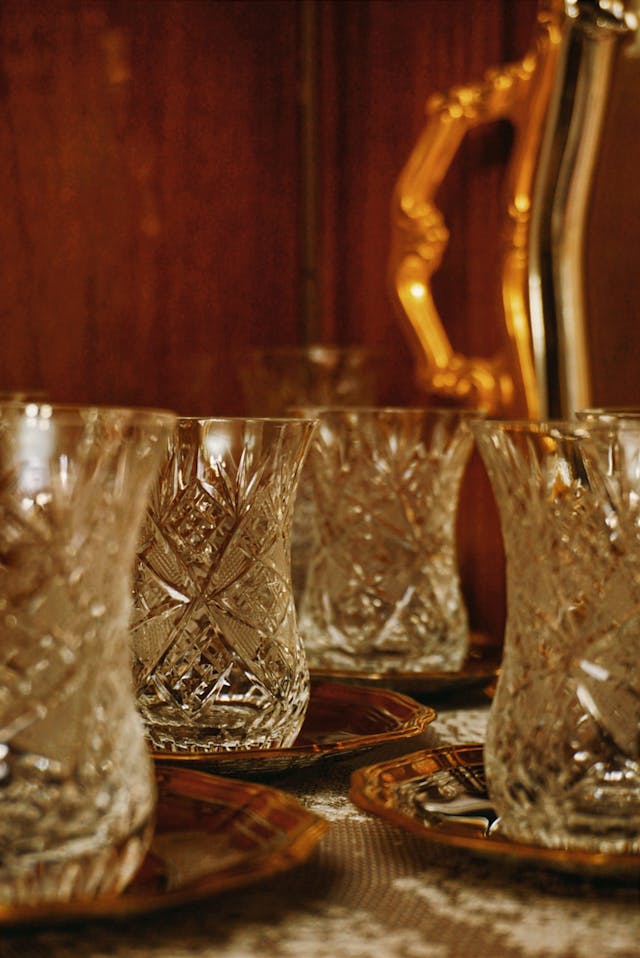
Over time, antique glassware naturally acquires signs of wear and aging, which can help you determine its authenticity. Look for slight abrasions or scratches on the surface of the glass, particularly around the base or rim, where the piece may have been handled or placed on various surfaces over the years. The wear should appear consistent with age and use, not something that would come from modern manufacturing methods.
Additionally, some antique pieces may have developed a slight haze or cloudiness over time, which can also be a sign of age. This effect occurs as the glass reacts with the air, water, or chemicals it has come into contact with over the years. These natural signs of wear give the piece character and are difficult to reproduce in new glassware.
Assess the Glass Thickness
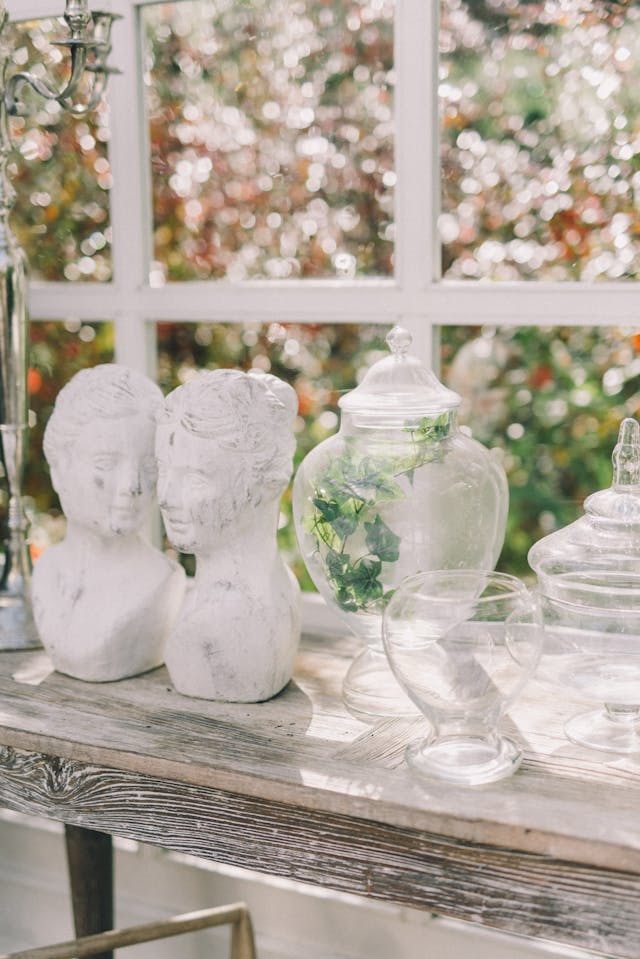
The thickness of antique glassware can provide important clues about its age and authenticity. Many older glass pieces, especially those produced before the 20th century, tend to have thicker walls than modern pieces. This was due to the materials and techniques used at the time, which required more glass to be used in the creation of the piece. Additionally, older glassware may show slight variations in thickness throughout the piece, reflecting the handmade nature of the work.
Modern glassware is often made with thinner walls and more consistent thickness due to the use of machine-made processes. When examining an antique piece, consider the thickness of the glass and compare it to modern standards. A thicker, unevenly distributed wall can be a key indicator that the piece is an authentic antique.
Pay Attention to the Pattern and Design
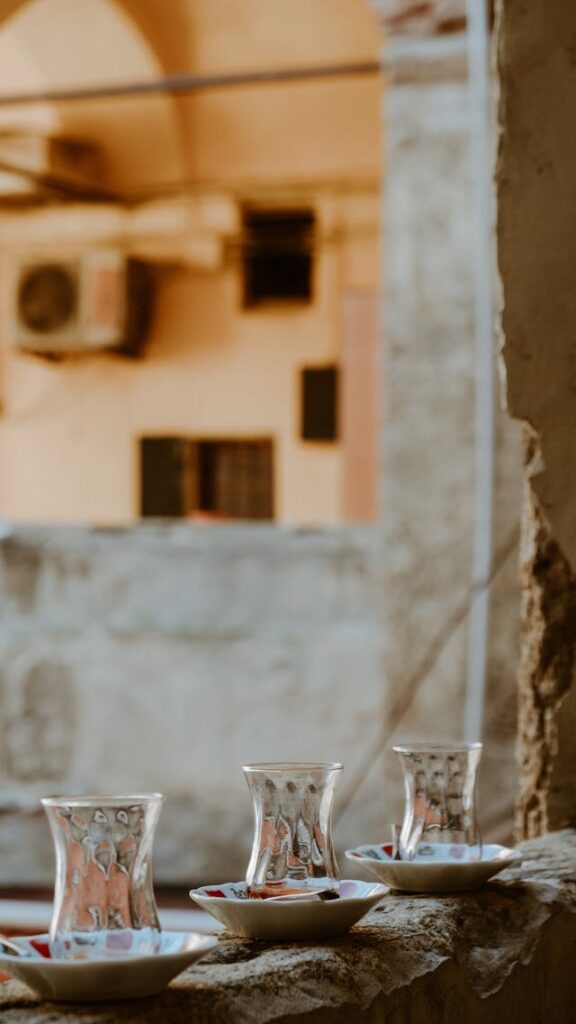
The design of antique glassware is often unique and indicative of the period it was made. Many older pieces feature intricate patterns or etched designs that are difficult to replicate today. These designs were often created using hand-carving or manual engraving techniques, which result in a level of detail and complexity that cannot be matched by mass-production methods.
If you come across a piece with a distinctive pattern or design, take the time to research its origin. Many antique glassmakers were known for their signature patterns, and understanding these can help you authenticate a piece. The rarity and intricacy of the design can also influence the value of the glassware, making it a prized collectible.
This article originally appeared on Avocadu.
